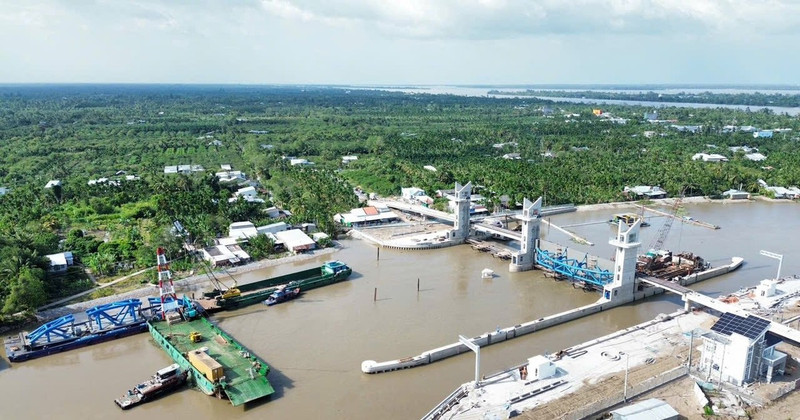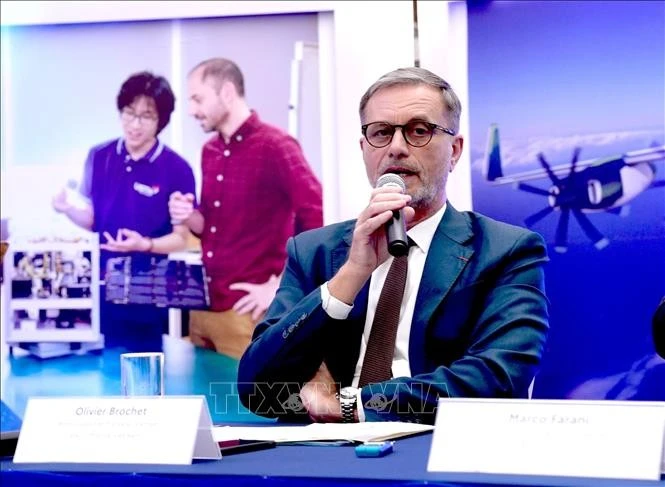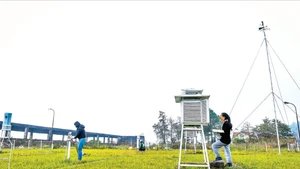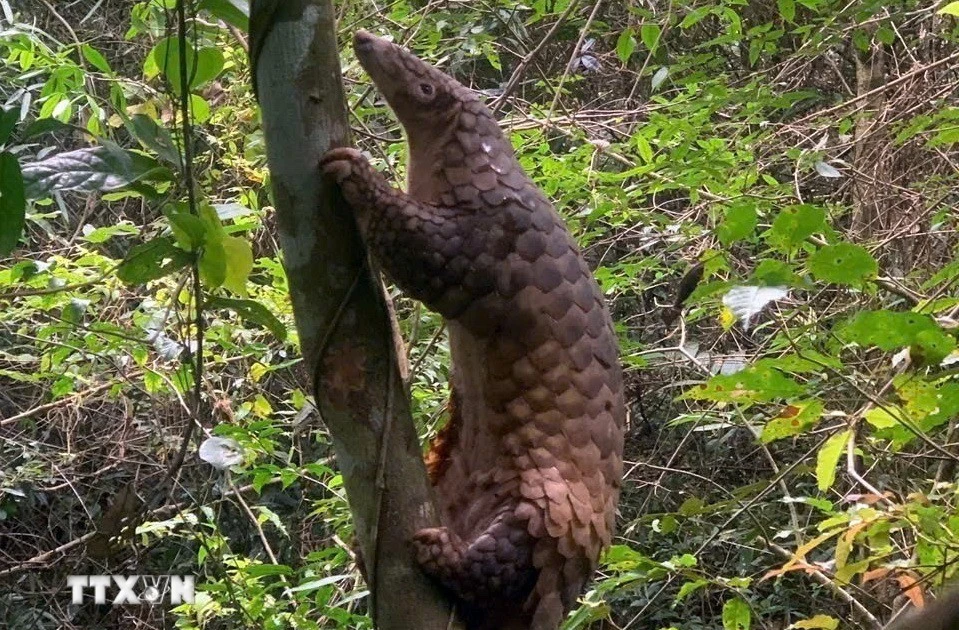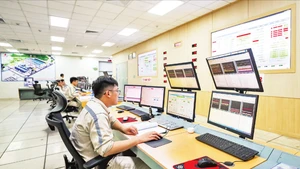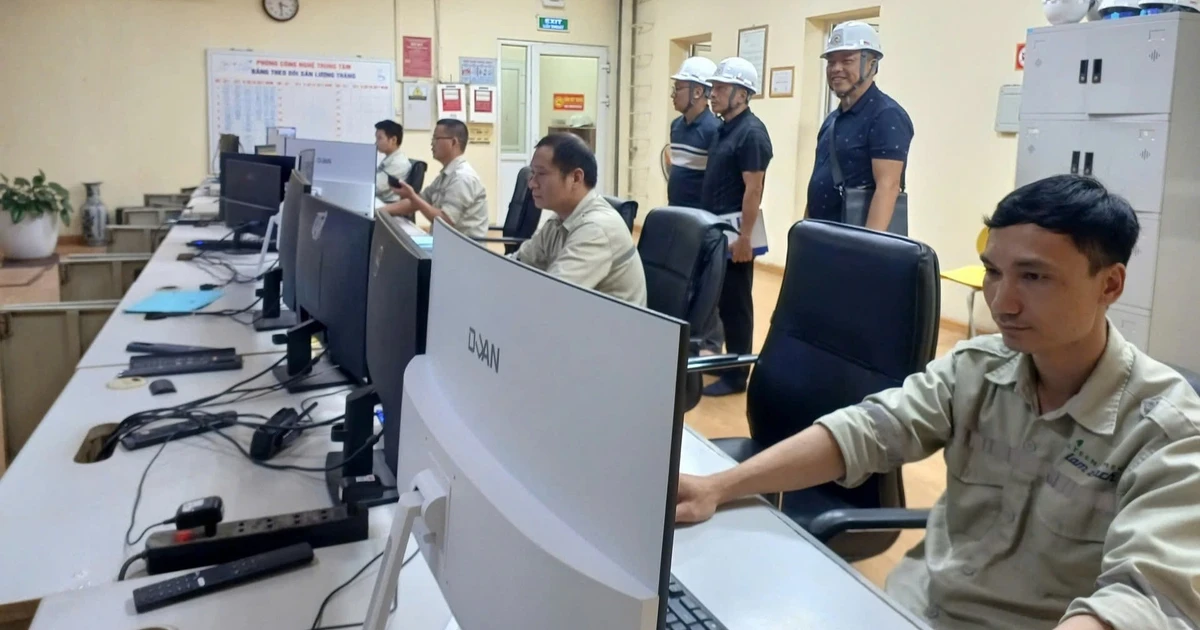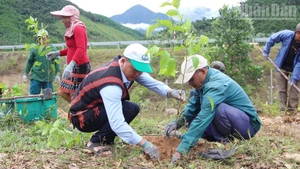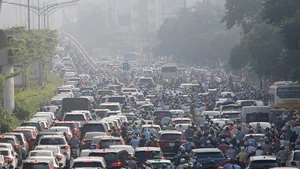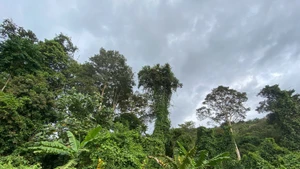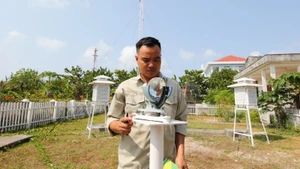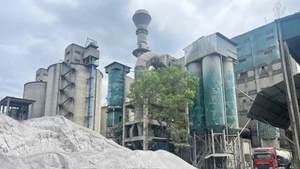Natural disasters are having a widespread impact
On the Vam Co Dong and Vam Co Tay rivers, saline intrusion is expected to reach about 70-75 km inland, which is 6-8 km less than the same period last year. In the Cai Lon River, the 4g/l saline boundary may extend 50-53 km inland, which remains within the controlled limits according to the approved operational procedures. From April 2025, saline intrusion is expected to gradually decrease in the Mekong River estuaries. However, in the Vam Co Dong and Vam Co Tay river regions, salinity could persist until the end of April if rainfall does not occur.
To cope with drought and saline intrusion throughout the dry season, the Ministry of Agriculture and Environment has directed an increase in freshwater intake and storage in canals, ditches, ponds, and low-lying areas. Emergency pumping stations are being installed and operated to maximise water resources and minimise losses and wastage. In the long term, the Ministry is researching and constructing additional saltwater prevention infrastructure while improving existing irrigation systems to enhance saline intrusion control, such as projects for managing salinity in the Vam Co River, Ham Luong River, and other estuaries.
In recent years, land subsidence, drought, and increasing saline intrusion have had severe and widespread impacts, significantly affecting the environment, the lives of millions of people, and the socio-economic development of the Mekong Delta — Vietnam’s leading rice-producing region. Therefore, comprehensive and long-term solutions that combine prevention and adaptation must be implemented across the delta. This is the key to building a safe and sustainable Mekong Delta.
Minister of Agriculture and Environment Do Duc Duy emphasised that in the past, the Mekong Delta primarily faced natural disasters such as floods. As a result, localities mainly focused on building residential embankments, dikes, and land elevation projects for flood prevention. However, with increasingly complex climate change, disaster patterns have changed significantly. Specifically, since 2016, 812 landslide sites have been recorded with a total length of more than 1,191 km, directly impacting the local economy and people’s livelihoods.
According to several studies, the main causes of the increasing natural disasters in the Mekong Delta are global climate change, the region's internal development, and unsustainable exploitation of natural resources. Excessive groundwater extraction and reduced upstream water flow have exacerbated land subsidence, water shortages, and saline intrusion, becoming major threats to the environment and the livelihoods of local residents.
To respond to worsening natural disasters, the Ministry of Agriculture and Environment is urgently developing the “Project on preventing and combating land subsidence, landslides, flooding, drought, and saline Intrusion in the Mekong Delta until 2035, with a vision toward 2050”, to be submitted for approval by the Party and Government.
Need for comprehensive solutions
Over the years, the Party, State, and Government have issued numerous resolutions, strategies, programs, and action plans for the sustainable development of the Mekong Delta. Notably, Resolution No. 120/NQ-CP by the prime minister outlines sustainable development strategies for the Mekong Delta in response to climate change. Additionally, Decision No. 287/QĐ-TTg by the prime minister sets out planning for the Mekong Delta until 2050. Various ministries and sectors have also developed and implemented numerous specific projects. However, experts argue that comprehensive measures must be implemented to fully unlock the region’s economic and social potential. During implementation, collaboration between local governments, communities, and inter-provincial coordination is essential to maximise natural and human resources. Annual reviews and assessments of saline intrusion response efforts should be conducted to draw lessons for each region and locality, helping residents gradually adapt and work toward sustainable development.
Regarding the "Project on preventing and combating land subsidence, landslides, flooding, drought, and saline intrusion in the Mekong Delta," Minister Do Duc Duy emphasised that a comprehensive and long-term strategy must integrate both preventive and adaptive measures. This project should be incorporated into regional planning with an inter-provincial approach, as natural disasters have no boundaries and impact all areas within the region.
One fundamental solution is to develop both structural and non-structural measures, including raising community awareness and applying science and technology to disaster prevention. In this regard, experts emphasise the need to invest in database systems for flooding and saline intrusion monitoring, as well as upgrading monitoring networks to promptly detect and respond to abnormal weather events.
Another critical factor is mobilising resources from state budgets, non-governmental organisations, and the community. Given the high costs of disaster prevention infrastructure, proper resource allocation will determine the effectiveness of these measures.
Many experts suggest that, in the long run, it is essential to complete and integrate irrigation systems to control saline intrusion, regulate floods, and ensure a reliable supply of freshwater for both agricultural production and daily life. Efforts should focus on addressing coastal and riverbank erosion in high-risk areas, mitigating localised flooding due to tidal surges, and coordinating resettlement programs for residents displaced by riverbank and canal erosion. These are urgent priorities that will help Vietnam’s leading rice-producing region develop sustainably, ensuring long-term economic stability and security in the context of globalisation and climate change.
